Compressed Gas Cylinders
Introduction
Today compressed gases are used in enormous and various industries, including medical, healthcare, hotels, restaurants, manufacturing units, etc. These compressed gases may have different properties or may serve different purposes, yet the risk of handling (i.e., during hot work, in confined spaces, for painting purposes, etc.) and storing of gas cylinders remains same. If proper care is not taken while handling and storing compressed gas cylinders, it may lead to near miss or to the catastrophic and devastating accidents.
Thousands of industrial accidents are recorded each year involving compressed gas cylinder. In spite of strict and stringent guidelines that are in place regarding the handling, storage and use of compressed gas cylinders in workplace, there is still rampant negligence. Incorrect handling, improper filling procedures, unscientific installation, education & training and supervision of staff are all the key contributing factors to the situation.
Post proper analysis, we understand the two most frequent causes of accident involving gas cylinders are inadequate storage and poorly ventilated gas cylinder storage facilities. To ensure the safe storage of compressed gas cylinder and to meet all regulatory compliance, safe working practices and respective checklist (after PTW) to be followed.
Compressed and liquefied gases are routinely used in laboratories and various other operations in factories. Guidelines provide information for their safe practices and apply to all workers who use or otherwise handle compressed or liquefied gases.
Compressed and liquefied gases have the potential for creating hazardous working environments. Safety Officers promotes, safe use of gases by offering training and information on the proper storage, handling, use and disposal of compressed and liquefied gas cylinders.
Definitions
- Absolute Pressure: Based on a zero-pressure reference point, the perfect vacuum. Measured from this point, standard atmospheric pressure at sea level is 14.7 pounds per square inch (psi) or 101.325 kilo Pascals (kPa). This is usually expressed as psia where the ‘a’ indicates an absolute measurement or kPa.
- Asphyxiant Gas: Any non-toxic gas which displaces atmospheric oxygen below limits required to support life. These gases are usually colorless, odorless and tasteless and include nitrogen, argon and helium.
- Compressed Gas: A compressed gas is any gas which when enclosed in a container gives:
- An absolute pressure reading greater than 276 kPa (40 psi) at 21°C (70°F) or
- An absolute pressure greater than 717 kPa (104 psi) at 54°C (129.2°F) or
- Any flammable liquid having a vapor pressure greater than 276 kPa (40 psi) at 38°C (100.4°F).
- Compressed Gas Cylinder: A compressed gas cylinder is any metal cylinder of the type approved by the Govt for storage and transportation of gases under pressure, including liquefied gases.
- Corrosive Gas: A gas that is in contact with living tissue causes destruction of the tissue by chemical action.
- Cryogenic Liquid: A liquid with a normal boiling point below -150°C (-238°F).
- Cryogenic Liquid Cylinder: Pressurized container designed and fabricated to hold cryogenic fluids. There are three common types of liquid cylinders:
- Gas dispensing.
- Liquid dispensing.
- Gas and liquid dispensing.
- Cylinder Valve: A mechanical device attached to a compressed gas cylinder that permits flow into or out of the cylinder, when the device is in the open position and prevents flow when in the closed position.
- Dewar: Dewar is an open-mouthed, non-pressurized, vacuum-jacketed container used to hold cryogenic fluids.
- Flammable Gas: A material that is a gas at 68° F (20°C) or less at 14.7 pounds per square inch atmosphere (psia)
(101 kPa) of pressure [a material that has a boiling point of 68°F (20°C) or less at 14.7 psia (101 kPa)] which:- Is ignitable at 14.7 psia (101 kPa) when in a mixture of 13% or less by volume with air; or
- Has a flammable range at 14.7 psia (101 kPa) with air of at least 12%, regardless of the lower limit.
The limits specified shall be determined at 14.7 psi (101 kPa) of pressure and a temperature of 68°F (20°C).
- Gauge Pressure: The pressure above or below atmospheric pressure. Therefore, absolute pressure minus local atmospheric pressure equals gauge pressure and is usually abbreviated as psig or kPa.
- Handling: Moving, connecting or disconnecting a compressed or liquefied gas container under normal conditions of use.
- Highly Toxic Gas / Toxic Gas: A material which produces a lethal dose concentration that falls within any of the following categories:
- A chemical that has a median lethal dose (LD50) of 50 milligrams or less per kilogram of body weight when administered orally to albino rats weighing between 200 and 300 grams each.
- A chemical that has a median lethal dose (LD50) of 200 milligrams or less per kilogram of body weight when administered by continuous contact for 24 hours (or less if death occurs within 24 hours) with the bare skin of albino rabbits weighing between two and three kilograms each.
- A chemical that has a median lethal concentration (LC50) in air of 200 parts per million by volume or less of gas or vapor, or 2 milligrams per liter or less of mist, fume, or dust, when administered by continuous inhalation for 1 hour (or less if death occurs within 1 hour) to albino rats weighing between 200 and 300 grams each.
- High Pressure Gas: A gas in a container that has a pressure of 3448 kPa (500 psig) or higher at 21.1°C (70°F).
- Inert Gas: A gas which is chemically inactive.
- Liquefied Gas: A fluid within a pressurized container, other than in solution, which exists both as a liquid and gas at 20°C (68°F). Examples include propane, butane, ammonia, carbon dioxide, and sulfur dioxide.
- Manifold: A gas distribution system which transfers product through multiple outlets/inlets to or from compressed gas containers.
- Nonflammable Gas: A gas which, within the packaging, exerts an absolute pressure of 280 kPa (40psi) or greater at 20°C (68°F) but is not a flammable gas as defined previously.
- Oxidizing Gas: A gas that can support and accelerate combustion of other materials.
- Pressure Regulator: A mechanical device used to safely control the discharge pressure of a compressed gas from a container.
- Pressure Relief Device: A pressure and/or temperature activated device used to prevent the pressure from rising above a predetermined maximum and thereby prevent rupture of a pressurized container.
- Pyrophoric Gas: A gas that will spontaneously ignite in air at or below 54.4°C (130°F). Examples include silane and phosphine.
- SCF: One “Standard Cubic Foot” of gas at 21°C (70°F) and 101.325 kPa (14.696 psia).
- Storage: Holding of gas, in its packaging, either on a temporary basis or for an extended period in such a manner as to not constitute usage of the gas.
Storage
Proper storage is critical for the safe use of compressed and liquefied gases. Hazard information regarding the gases stored should be prominently posted in cylinder storage areas. The National Fire Protection Association (NFPA) 704 diamond, with a cylinder indicated in the “specific hazard” (white) section of the diamond and the corresponding flammability, health and reactivity occupational hazard sections also marked, is an accepted method of signage.
Storage requirements of Gas Cylinders
- Always keep cylinder in an upright position.
- Gas Cylinder should be kept within well-ventilated area.
- Filled cylinder should be separated from empty cylinders.
- Gas Cylinder should be kept in the order in which they are received.
- Gas Cylinder should secure with a chain or appropriate belt above the midpoint, but below the cylinder’s neck. Laboratory cylinders less than 18 inches tall may be secured by approved stands or wall brackets.
- Gas Cylinder should be kept with cap on, when not in use.
- All Gases with the same hazard class are stored in the same area. Inert gases are compatible with all other gases and may be stored together.
- Gas Cylinder storage area/room should be at least 20 feet away from all flammables, combustible or incompatible substances. Storage areas that have a noncombustible wall at least 5 feet in height and with a fire resistance rating of at least 30 minutes may be used to segregate gases of different hazard classes in close proximity to each other.
Don’ts
- Do not keep cylinder in exits or egress routes.
- Never keep cylinder in damp areas i.e., near salt, corrosive chemicals, fumes, heat; or exposed to the weather without a roof housing.
- Gas Cylinder should not store more than one year without use.
Handling
Compressed gases cylinders must be handled by properly trained persons/workers.
To safely handle gas cylinders
- Never drag or physically carry cylinders (lecture cylinders may be carried).
- Never pick up by the cap (i.e., not by crane).
- Never paint a cylinder.
- Never do horseplay with cylinders.
- Never leave cylinders in areas where they will be subject to damage from falling objects, corrosion or public tampering.
- Never subject cylinders to artificially created low temperatures without approval from the supplier.
Lifting and moving requirements
- Wear PPEs i.e., safety helmets, hard-toed safety shoes.
- Do not use steel wire ropes, chains and slings to suspend cylinders, unless the cylinder was designed for that use.
- Do not use magnets to lift cylinders.
- Use only suitable cradles or platforms to hold a cylinder when lifting.
- Use a hand-truck designed for the transport of cylinders.
- Secure cylinder caps during transport.
- Vehicle Transport
- Only transport cylinders or cryogenic liquid containers in university vehicles.
Proper cylinder hand-truck. - Cylinders or cryogenic liquid containers must only be transported in a truck bed and properly secured.
- Do not transport cylinders of cryogenic liquid containers in the passenger compartment of any vehicle.
- Only transport cylinders or cryogenic liquid containers in university vehicles.
- Elevator Transport
- Do not accompany a compressed gas cylinder containing highly toxic gas on an elevator.
- Place the cylinder in the elevator and press the destination floor.
- Attach a sign to the cylinder, telling others not to use the elevator during the cylinder’s trip.
- Another person should be stationed at the destination of the elevator entry.
General Requirements
- Ensure the regulator pressure control valve is closed before attaching it to cylinders.
- Do not stand in-line with the regulator and valve outlet when attaching the regulator to the cylinder.
- Close valves on gas cylinders when a system is not in use.
- Remove all pressure from regulators not currently used (by opening equipment valves downstream after the regulators are closed).
- Do not install shut-off valves between pressure relief devices and equipment.
- Use pressure relief valves in downstream lines to prevent high pressure buildup in the event that a regulator valve does not seat properly, and a
tank valve is left on. - Vent relief valves to a fume hood or ventilated gas cabinet, when using flammable or toxic gases.
- Pressurize regulators slowly and ensure that valve outlets and regulators are pointed away from all personnel when cylinder valves are opened.
- Leave the wrench in place on the cylinder valve, when needed, to open the main valve. Use adequately sized wrenches (12 inches long) to minimize ergonomic hazard when turning tight tank valves. Cylinders with “stuck” valves should be returned to suppliers to have valves repaired.
- Fully open valves during cylinder use. A fully open valve improves the internal seal and helps prevent packing leaks.
- Use a cylinder cap hook to loosen tight cylinder caps. Never apply excessive force to pry off caps. Return a cylinder to the supplier to remove “stuck” caps.
To safely use Gas Cylinders
- Never apply excessive force when trying to open valves. Don’t use cheaters (wrench extensions).
- Never allow hot work i.e., flames or concentrated heat sources to come in contact with a gas cylinder.
- Never allow a gas cylinder to become part of an electrical circuit/hazard to ensure electrical safety.
- Never partially open a cylinder valve to remove dust or debris from the cylinder inlet.
- Never use cylinder gas as a compressed air source.
- Never use adapters or exchange fittings between tanks and regulators.
- Never use Teflon tape on Compressed Gas fittings (straight thread) where the seal is made by metal-to-metal contact. Use of Teflon tape causes the threads to spread and weaken, increasing the likelihood of leaks. Small pieces of tape can also become lodged in the valve mechanism resulting in possible valve failure.
- Never attempt to open a corroded valve; it may be impossible to reseal, or it may break and release the cylinder’s contents.
The following information applies to the use of manifolds, piping, valves and/or regulators:
- Where compressed gas cylinders are connected to a manifold, the manifold and its related equipment, such as regulators must be of proper design for the product(s) they are to contain at the appropriate temperatures, pressures and flows.
- Use only approved valves, regulators, manifolds, piping, and other associated equipment in any system that requires compressed gas.
- Ensure pressure gauges on regulators are correct for the pressure of the gas cylinder used.
- Gas threads, configurations and valve outlets are different for each class of gases to prevent mixing of incompatible gases. Lecture bottles are an exception.
- Lecture bottles use universal threads and valves, some of which are interchangeable. Label all associated equipment with the gas name, to prevent unintentional mixing of incompatible materials.
- Contact Safety/EHS Officer for any questions or queries regarding cylinder.
The following information applies to the use of system piping, regulators, manifolds and other apparatuses.
- Keep piping, regulators and other apparatuses gas tight to prevent gas leaks.
- Confirm the connection seal by using compatible leak test solutions (e.g., soap and water) or leak test instruments.
- Release pressure from systems before connections are tightened or loosened and before any repairs.
- Fluorescent light can be used to check for grease or oil in regulators and valves.
- Valve and Regulator Maintenance
- Refer histories or previous near miss / accident of valve and regulator maintenance before use.
- Valves and regulators should undergo periodic maintenance and repair as necessary.
- Perform a visual inspection before each use to detect any damage, cracks, corrosion, or other defects.
- Valves that pass visual inspection are still subject to failure. It is critical that toxic or poisonous gases are used in ventilated enclosures and have local exhaust ventilation in place for downstream pressure relief valves.
- Long term maintenance or replacement periods vary with the types of gases used, the length of use, and conditions of use. Consult the cylinder, regulator or gas supplier for recommended valve and regulator maintenance schedules.
- Valves and regulators should only be repaired by qualified individuals. Consult valve and regulator manufacturers, gas supply companies, or valve and regulator specialty shops for any repair needs.
The following labeling requirements apply to all gas cylinders:
- Use only the vendor label for positive identification of contents of the cylinder. Be aware that color coding may be inconsistent from vendor to vendor.
- Mixed gases must be clearly labeled with the contents of the cylinder.
- Empty cylinders must be labeled with the word “empty”.
- Know the contents of each cylinder you are using. Preferred labeling includes the identity of the material, statement of hazard and the associated signal word.
- Only the gas supplier is allowed to mix gases in a cylinder.
- Do not use cylinders for any other purpose than holding the contents as received.
- Leaking, defective, fire burned, or corroded containers must not be shipped without the prior approval of the supplier.
Cryogenic liquids and their boil-off gases rapidly freeze human tissue and cause embrittlement of many common materials. All cryogenic liquids produce large volumes of gas when they vaporize and may create oxygen-deficient conditions.
Examples of common cryogenic liquids include liquid oxygen, hydrogen, helium, and liquid neon. The following information applies to the use & handling of cryogenics:
- Use appropriate PPEs, including helmet, insulated gloves, apron, eye protection (goggles and a face shield) during any transfer of cryogenic liquid.
- In the event of skin contact with a cryogenic liquid, do not rub skin; place the affected part of the body in a warm water bath (not to exceed 40°C [105°F]). If a burn is significant, seek medical attention.
- Use only equipment, valves and containers designed for the intended product, service pressure and temperature.
- Inspect containers for loss of insulating vacuum. If the outside jacket on a container is cold or has frost spots, some vacuum has been lost. Empty the contents into another cryogenic container and remove the damaged unit from service. Repairs should be made by the manufacturer or an authorized company.
- Transfer operations involving open cryogenic containers, such as Dewars, must be conducted slowly to minimize boiling and splashing of the cryogenic fluid.
- Ice or other foreign matter should not be allowed to accumulate beneath the vaporizer or the tank. Excessive ice buildup could result in the discharge of excessively cold gas or structural damage to the cryogenic container or surroundings.
- All cryogenic systems, including piping, must be equipped with pressure relief devices to prevent excessive pressure build-up. Pressure reliefs must be directed to a safe location. Do not tamper with pressure relief valves or the settings for the valves.
- Hot air, steam or hot water should be used to thaw frozen equipment. Exception: Do not use water to thaw liquid helium equipment.
- For vehicle transportation, cryogenic liquid containers must only be transported in a university truck bed and not within a vehicle’s passenger.
Some common examples of flammable gases include acetylene, hydrogen, methane, propane, carbon monoxide, and isobutane.
- Flammable gases, except for protected fuel gases, must not be used near ignition sources. Ignition sources include open flames and sparks, sources of heat, oxidizing agents and ungrounded or non-intrinsically electrical safety or electronic equipment.
- Portable fire extinguishers must be available for fire emergencies. The fire extinguisher must be compatible with the apparatus and the materials in use. Contact Safety/EHS Officer to ensure an appropriate fire extinguisher being used for a specific gas.
- Do not use flames for detecting leaks. A compatible leak detection solution must be used for leak detection.
- Use spark-proof tools when working with or on a compressed gas cylinder system containing flammable gases.
- Post “No Open Flames” signage on access doors to areas that use or store flammable gases.
- Manifold systems must be designed and constructed by competent personnel who are familiar with the requirements for piping of flammable gases. Consultation with the gas supplier before installation of manifolds are recommended.
High pressure gases can be rated up to 3,000 pounds per square inch (psi). Typical uses for high pressure gases include:
- Inert welding gas mixtures
- Cryogenics.
- Non-toxic gas distribution.
- Medical gas distribution.
- Emergency oxygen services.
In addition to any gas-specific hazards, high pressure gases should carry a caution label.
Oxidizing gases are non-flammable. Oxidizing gases, but in the presence of an ignition source and fuel can support and vigorously accelerate combustion include:
- Oxygen.
- Chlorine.
- Fluorine.
- Nitrous oxide
- Gauges and regulators for oxygen shall bear the warning “OXYGEN – USE NO OIL.”
- Do not use oil in any apparatus where oxygen will be used.
Identification & Disposal
- Proper identification of the contents of all cylinders is required and is the responsibility of the cylinder owner.
- Maintain manufacturer labels on cylinders. If a cylinder is empty, label the cylinder with an “Empty” tag.
- Make an effort to rent, rather than purchase gas cylinders.
- Refillable cylinders should be returned to the vendor. Return cylinders with at least 13 kg of pressure to reduce the risk of foreign materials entering the empty vessel.
- Lecture cylinders must be returned at atmospheric pressure.
- Safety/EHS Officer should be contacted for disposal of partially full cylinders or unwanted full cylinders.
- Disposal fees for unknown cylinders are a departmental expense.
Despite adherence to cylinder safety practices, accidents involving gases may occur. The amount of damage sustained by personnel and property from these accidents is greatly influenced by the quality of the emergency plan. Users of compressed gas cylinders must be familiar with necessary safety precautions. SOPs for using compressed gases must include a discussion of possible accident scenarios, appropriate employee responses and should take into account the following factors:
- The nature of the operation i.e., experimental design, equipment used and type of injury that could occur.
- The potential location of a release or spill (i.e., outdoors versus indoors, in a laboratory, corridor or storage area, on a table, in a hood, or on the floor).
- The quantities of material that might be released and the type of containment (i.e., compressed gas tank size, manifold systems, etc.).
- The chemical and physical properties of the compressed gas (e.g., its physical state, vapor pressure and air or water reactivity).
- The hazardous properties of the compressed gas (e.g., its toxicity, corrosivity and flammability).
- The availability and locations of emergency supplies and equipment.
- An Emergency Action Plan that identifies building evacuation routes, emergency telephone numbers, chemical containment procedures, fire extinguisher usage, etc.
Occasionally, a gas cylinder or one of its component parts may develop a leak. Most of these leaks occur at the top of the cylinder, in areas such as the valve threads, pressure safety device, valve stem, or the valve outlet. To correct minor leaks:
- For non-toxic gases, verify suspected leaks using a gas detector or soapy water solution (a flame should not be used for detection). If the leak cannot be stopped by tightening a valve gland or packing nut, notify the vendor, if the cylinder is rented. Do not try to fix a leak on a toxic or highly toxic gas cylinder, instead initiate emergency action procedures.
- For flammable (non-toxic), inert or oxidizing gases (non-toxic), move the cylinder to an isolated and well-ventilated area (within or next to a fume hood), away from combustible materials. Post signs that describe the hazard.
- For corrosive and toxic gas leaks, immediately contact Safety/EHS Officer remediation or cylinder removal. Do not remove a leaking toxic gas cylinder from a ventilated cabinet.
In the event of a large gas release or if an accident takes place, activate the following emergency procedures:
- Evacuate the area, securing entrances and providing assistance to others on the way out.
- Activate building and area fire alarms (or chemical safety alarms if applicable).
- Immediately call emergency number and report the incident.
- Provide emergency response officials with details of the problem upon their arrival
Accidents Involving Personnel Injury
- For medical emergencies call emergency number as enlisted.
- Assist persons involved and administer immediate first aid, which may include:
- Washing under a safety shower (in case of burning clothing or chemical exposures).
- Removing contaminated clothing.
- Irrigating the eyes at an eyewash station.
- Administering cardiopulmonary resuscitation (CPR).
- Notify personnel in adjacent areas of any potential hazards (e.g., activate building or area fire alarms).
- Move injured personnel only if necessary to prevent further harm.
Fire and Fire-Related Emergencies
Small, isolated fires within the factory may be extinguished using the appropriate portable fire extinguisher, if workers are confident that they can safely extinguish the fire. For large or rapidly spreading fires, the following procedures should be followed:
- Activate building and area alarms.
- Call emergency number to report the fire.
- Evacuate the building, shutting doors and providing assistance to others on the way out.
- Provide fire or police officials with the details of the problem upon their arrival.


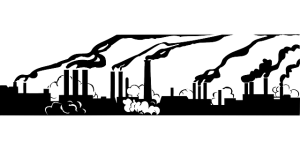
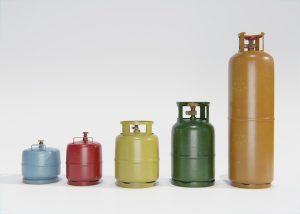
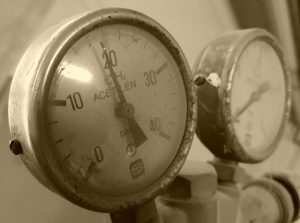
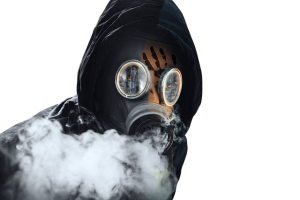
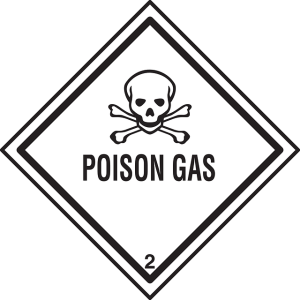

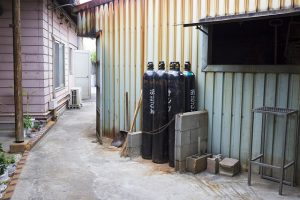

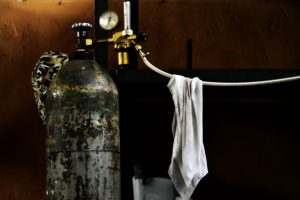
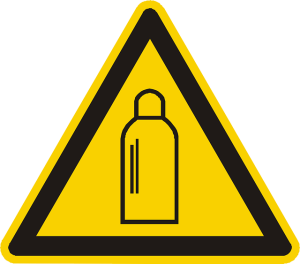
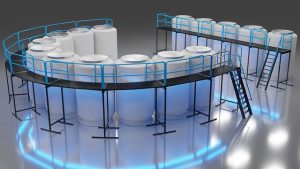
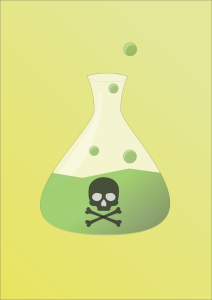
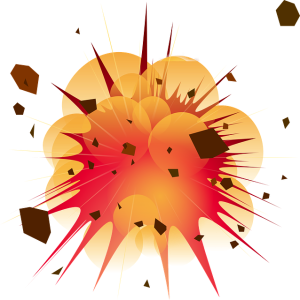
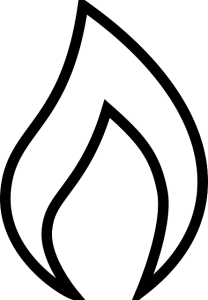


Great read! Your article offers valuable insights and actionable advice. I particularly enjoyed the shared info. Looking forward to implementing these strategies. Keep up the fantastic work!
thank you